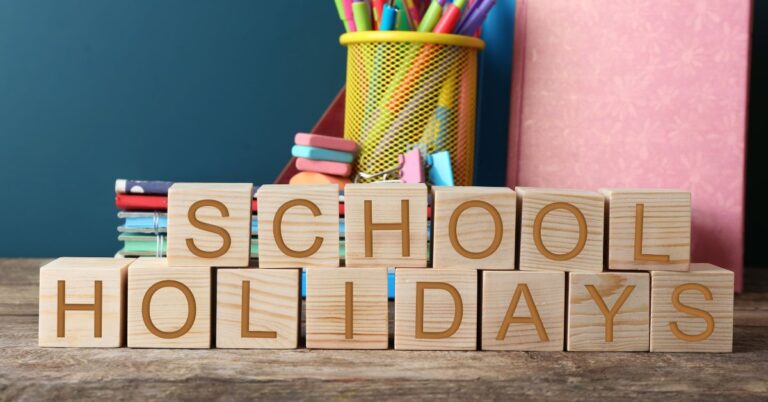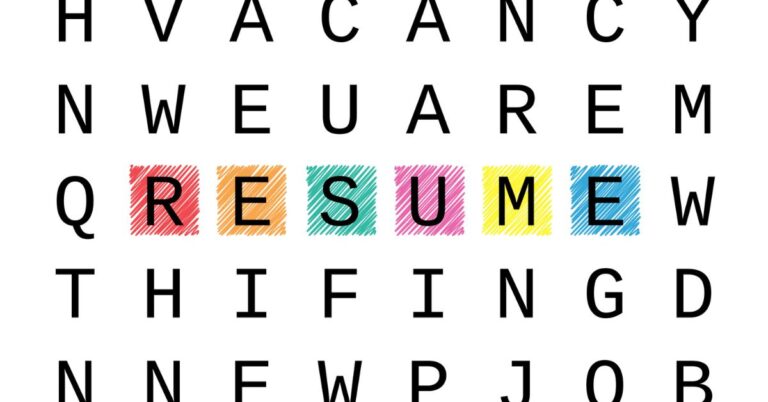16 Tips for Helping ADHD Students in the Classroom
Helping ADHD students in the classroom is a priority for most teachers, given the numbers of our students who struggle with the problems ADHD can create for them in numerous areas of their personal and academic life.
According to data from the Centers for Disease Control and Prevention (CDC), approximately 6 million children between the ages of 4 and 17 have been diagnosed with Attention Deficit Hyperactivity Disorder (ADHD) in the United States. This number represents about 9.8% of children in this age range.
Although the CDC’s data categories make it difficult to determine exactly how many of the children who have been diagnosed with ADHD are in middle school and high school, the data indicate that the numbers of children diagnosed with ADHD increase as children grow older.

Because many students’ struggles with ADHD create problems related to teaching, learning, and classroom management, teachers need ideas for helping students with ADHD in the middle school and high school classroom environment.
Read on to clarify your understanding of the struggles your ADHD students face and to learn more about how to help students with ADHD in the secondary classroom!
Table of Contents
What challenges and difficulties do ADHD students face?
Students with ADHD may face a number of personal and academic challenges and difficulties that can impact their ability to succeed in school and in other areas of their life.
Challenges with time management
Students with ADHD may struggle with organizing their schedule and managing their time effectively, which can lead to missed deadlines, incomplete assignments, and difficulty with time management, in general.
Difficulties with focus and concentration
Students with ADHD may have difficulty maintaining focus and concentration, which can make it difficult for them to complete tasks and assignments.
Difficulties with memory
Students with ADHD may have difficulty with memory, which can make it difficult for them to remember instructions, complete assignments, and retain information.
Difficulties with organization
Students with ADHD may struggle with organizing their materials and keeping track of their belongings, which can lead to lost or misplaced items and difficulty with any type of task that requires organization.
Difficulties with social interactions
Students with ADHD may have difficulty with social interactions, which can lead to isolation and difficulty making and maintaining friendships.
Difficulty with impulsivity
Students with ADHD may have difficulty controlling their impulses, which can cause them to have problems following rules and instructions and lead to impulsive and inappropriate behavior.
What do ADHD students need in the classroom?
ADHD students need a classroom learning environment that will help them improve their ability to self-regulate their personal as well as their academic behavior.
Learning to use strategies for managing the challenges and difficulties their ADHD poses is the key to success for our students.
What type of learning environment is best for ADHD students?
Because every student is a unique individual with different learning styles, needs, and preferences, there is no one single answer to this question.
However, there are some techniques and strategies that help to accommodate as well as to complement various aspects of most ADHD students’ socio-emotional learning needs:
Structure and routine
Having a predictable routine and clear rules and guidelines can help students with ADHD feel more secure and better able to focus on their work.
Small class sizes
Smaller class sizes can allow for more individualized attention and support for students with ADHD.
Flexibility
Allowing for breaks, movement, and other accommodations can help students with ADHD stay engaged and focused.
Visual aids
Using visual aids such as charts, diagrams, and pictures can help students with ADHD better understand and retain information.
Collaborative learning
Group work and other forms of collaborative learning can be helpful for students with ADHD because they may benefit from the social interaction and support of their peers.
Differentiated instruction
Tailoring instruction to a student’s individual strengths, needs, and learning style can be effective in helping students who have ADHD succeed in the classroom.
What are common ADHD accommodations?
Making small changes to the delivery of classroom instruction or the presentation of accompanying learning materials can help ADHD students improve their academic performance as well as their interpersonal skills.
A few examples of common and reasonable accommodations for students with ADHD include the following:
Extra time on assignments and tests
Allowing ADHD students more time to process information and complete tasks helps to reduce their stress level.
However, because ADHD students tend to lose track of time, it’s important to set a timer or use some other type of device to help they stay focused and on-task.
Use of a calculator and other devices
For individuals who struggle with math, using a calculator can be a helpful accommodation. Other types of devices may be useful as well.
Frequent breaks
Taking breaks during long or extended work sessions can help individuals with ADHD stay focused and engaged.
Seating near the front of the class
Preferential seating can help students with ADHD stay more focused and avoid distractions.
Use of a planner or organizer
Having a clear schedule and list of tasks can help individuals with ADHD stay on track and learn to manage their time effectively.
Use of assistive technology
Tools and software programs such as Trello, Evernote, and many others can help students with ADHD stay organized, manage their time, and remain on task.
Why do ADHD students have behavioral problems?
There are a number of reasons why students with ADHD may exhibit defiant, disobedient, or otherwise inappropriate behaviors that create problems with discipline and classroom management.
Some possible explanations for ADHD students’ behavioral problems include the following:
Difficulty paying attention
Students with ADHD may have difficulty paying attention in class, which can lead to misbehaving, not following directions, and other off-task behavior.
Impulsivity
Students with ADHD may struggle with impulsivity, which can cause them to act without thinking and make poor decisions that lead to inappropriate behavior.
Difficulty with executive function
Students with ADHD may have difficulty with executive function, which refers to the cognitive skills that are necessary for planning, organizing, and completing tasks. These problems with executive function can cause students to have difficulty following rules and routines.
Frustration
Students with ADHD may become frustrated if they are struggling to keep up with the class or if they are not able to understand the material. Their frustration can cause them to misbehave or disobey rules.
How do you motivate students with ADHD?
Motivating students with Attention Deficit Hyperactivity Disorder (ADHD) can be a challenge, but there are several strategies that teachers can use to help their students learn to self-motivate as they navigate the learning challenges their ADHD poses.
Classroom environment
One strategy to help motivate ADHD students is to create a positive and supportive classroom environment. Teachers can do this by setting clear expectations, providing positive feedback, and building a sense of community within the class.
Acknowledge individual differences
Because every student is different, what works for one student with ADHD may not work for another. It may take some trial and error to find the strategies that work best for each individual student.
Choice and autonomy
Another motivational strategy is to allow students with ADHD to have some degree of choice and autonomy in their learning experience.
Encouraging ADHD students to set goals and make decisions about their learning can help them to feel more invested in the learning process and their own educational experience.
Additionally, individual goal setting will help ADHD students develop a deeper level of intrinsic motivation, or self-motivation.
Overall, intrinsic motivation is important because it allows our students to find meaning and fulfillment in their daily activities, which can lead to a greater sense of well-being, improved performance, and increased creativity and innovation.
The importance of intrinsic motivation for ADHD students
Intrinsic motivation benefits ADHD students for numerous reasons. For example, research shows that higher levels of intrinsic motivation can lead to higher levels of performance and student achievement, and we teachers want to help all of our ADHD students achieve to their maximum potential.
What can teachers do to help ADHD students?
Research shows that teachers can help their ADHD students by providing them with the tools they need to take charge of their ADHD symptoms and manage their learning challenges.
Using a daily planner helps ADHD navigate the personal and academic obstacles their ADHD creates for them.
Daily student planner for ADHD students
When I began teaching middle school and high school students in 1992, public educations’ understanding of ADHD as well as the available resources to support classroom teachers and ADHD students were still very much in the Dark Ages.
So I did what all teachers do: I tried all sorts of strategies and different techniques to help my ADHD students. Through the years, I learned a lot from trial and error in my classroom practices as well as from the emerging research on ADHD that continues to evolve.

The ADHD Student Printable Digital Planner reflects the culmination of my years of working with ADHD students at the middle school and high school level.
This planner provides resources for helping ADHD students manage all of the negative aspects of their condition and gives them the tools they need to build their self-esteem and sense of self-efficacy.
Conclusion
Help for you and your ADHD students
We teachers want to help our ADHD students thrive and achieve to their maximum potential!
Do you need tools to help your ADHD students? If so, I’ll send you these free printable pages from my ADHD Student Daily Academic Planner that you can print, photocopy, and use to help your students!
This free ADHD printable gives you resources to help your ADHD students control their impulsivity, improve their focus, and manage their stress and anxiety.

Final thoughts about helping ADHD students
It is important to remember that while ADHD can pose challenges for our students and make it difficult for them to focus and follow through with tasks, they are still capable of learning, achieving, and thriving.
Our ADHD students just need our encouragement and support along with resources to help them navigate the challenges their condition creates.
Before you go…
Check out some of the other teacher-focused articles that include prom planning tips, online grading jobs for teachers, tips for buying teacher clothes, and much more!







